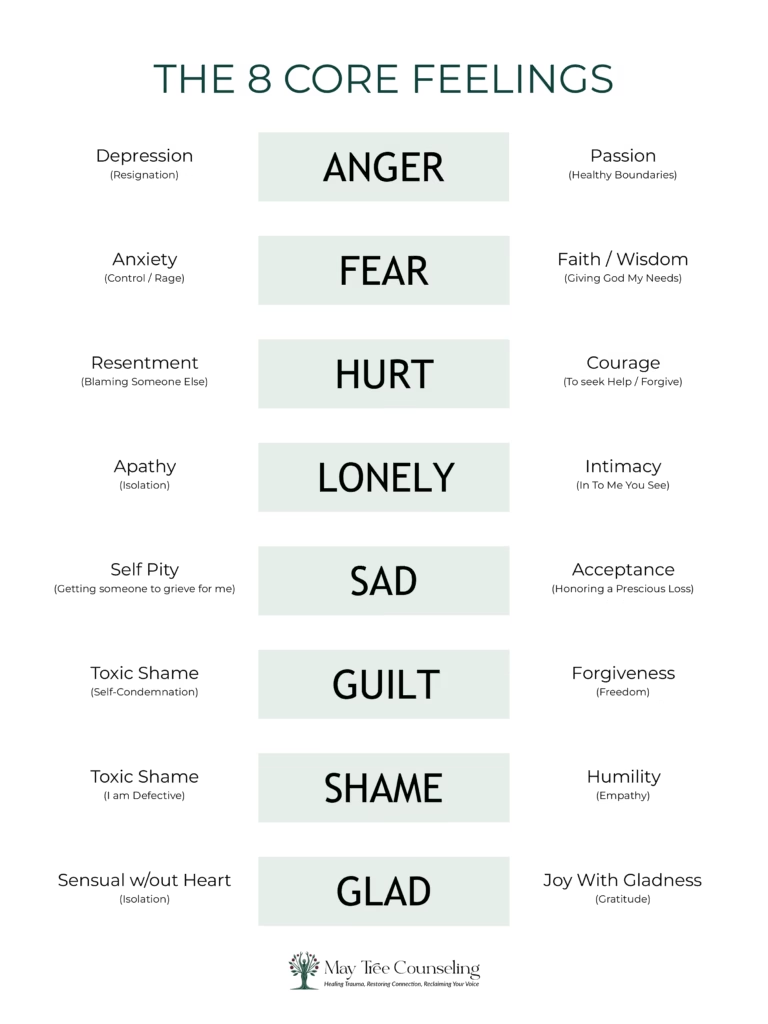
Have you ever felt emotionally lost, stuck, overwhelmed, or disconnected from who you truly are? You’re not alone. Many of us were taught to suppress our emotions or believe they didn’t matter. But what if you had a compass—an internal guide—to lead you back to yourself?
In his groundbreaking book The Voice of the Heart, Dr. Chip Dodd introduces the idea of eight core feelings as a map to emotional healing. Drawing on that framework, this article explores how the Compass of Core Feelings can help you navigate your inner world and find your way back to wholeness.
Deep Dive into the Compass
1. What Is the Compass of Core Feelings?
Think of this as your emotional navigation tool. Instead of being steered by reactive behaviors, you learn to identify your emotional landscape using eight core emotions: anger, fear, hurt, lonely, sadness, guilt, shame, and glad. Recognizing where you are using this “emotional compass” empowers you to choose a path forward.
2. Why It Matters
- Promotes emotional intelligence: Identify emotions before they overwhelm you.
- Strengthens resilience: Understand triggers and respond with clarity.
- Reveals hidden needs: Many symptoms such as stress, avoidance or irritability, may stem from unmet emotional needs.
3. Eight Core Feelings (and Their Value)
Explanation of the chart below: The 8 Core Feelings are listed down the center (in the green blocks), to the left are the impairments–what we get when do not allow ourselves to feel our core feeling and process it, and to the right are the gifts the feelings give us if we are able to feel it, process it, and let it move through us.

How to Use This Compass in Your Daily Life
- Check-in regularly: Pause mid-day for a “feelings check” to ask yourself, “Where am I on my emotional compass?” Name the feeling(s).
- Journal your observations: Was there a trigger for the feeling(s)? What does the feeling tell you about what you need?
- Take compassionate action: Adjust your routines or environment to honor that emotion (e.g., schedule rest when feeling sad or overwhelmed).
- Expand emotional comfort: Practice naming even the subtle shifts—like quiet frustration (low-grade anger) or fleeting delight (gladness).
Transformational Benefits
- Greater self-awareness–reduces reactivity
- More meaningful relationships
- Clearer sense of direction, grounded in emotional truth
Steps to Begin Today
- Pick a core feeling you’ve been ignoring recently.
- Pause and breathe when you notice that feeling arise.
- Ask gentle questions: “What’s beneath this? What might I need right now?”
- Take a small action—even 5 minutes of breathing, journaling, or walking counts.
- Reflect weekly: Note what shifts when you listen to that feeling.
Next-Level Support
- Receive deeper emotional healing through our Counseling services.
- Connect with like-minded individuals.
- Download our Emotional Compass Guide (PDF)—with reflection prompts and daily checklists.
📌 Final Thought
Just as a compass helps travelers navigate unknown territory, the Compass of Core Feelings helps you navigate your inner world—with authenticity, clarity, and acceptance. Ready to start your journey? Open your heart, trust your compass, and rediscover yourself—step by step.
Reference:
- Dodd, C. (2002). The Voice of the Heart: An Intimate Invitation. Nashville, TN: Thomas Nelson.


